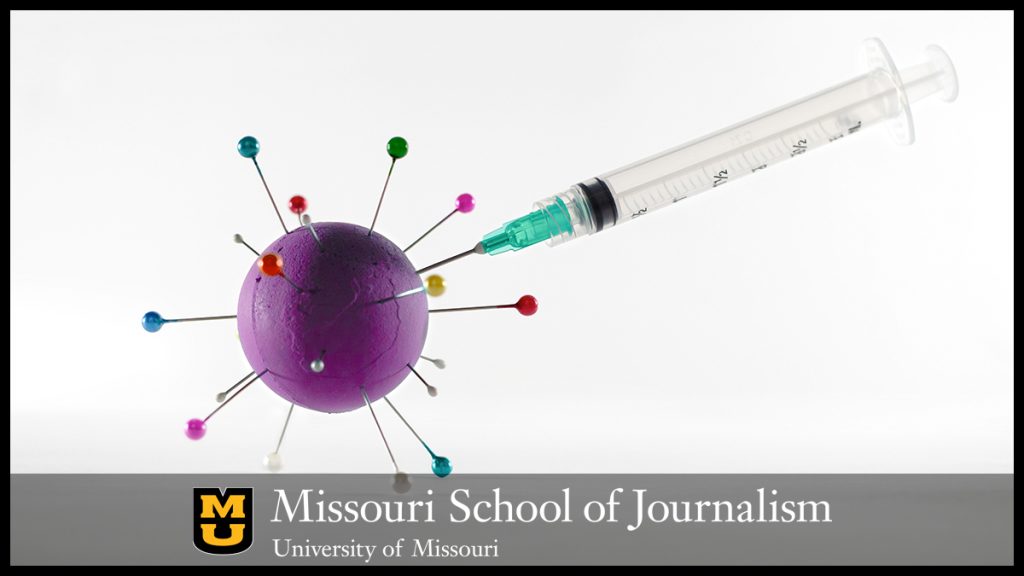Missouri School of Journalism partners with Sinclair School of Nursing to spread facts about COVID-19 vaccines, help nursing students communicate with public

Columbia, Mo. (May 7, 2022) — Two researchers at the Missouri School of Journalism partnered over the spring semester with Mizzou’s Sinclair School of Nursing to develop a multifaceted approach to fighting COVID-19 “vaccine hesitancy.” The project involved the creation of a curriculum for nursing students aimed at improving communication about vaccines to the public, as well as a radio-heavy messaging campaign designed to encourage people in rural Missouri to get vaccinated for COVID-19.
Funded by a grant from the American Association of Colleges of Nursing as part of a nationwide program funded by the Centers for Disease Control, the project is the latest example of collaborative research from the School of Journalism in the field of health and science communication.
“Science communication is a major research priority for both the J-School and the university at large,” said David Kurpius, dean of the School of Journalism. “Through projects like this one, J-School faculty are at the center of work that can have a transformative effect on the health and wellbeing of Missourians, which is exactly the kind of impact we expect from timely, nationally-funded research.”
Jon Stemmle, professor and chair of strategic communication at the School of Journalism, worked with a handpicked team of five J-School students to develop the messaging campaign, which targets mid-Missourians in five rural counties to provide facts about vaccines — such as the safety and effectiveness of mRNA vaccines, a frequent subject of misinformation — and encourages people to contact their local health departments for more information. In addition to radio spots, the campaign features print ads, social media posts and other forms of multimedia messaging to reach a wide audience.
“All of our messaging is about doing what each individual believes is the right thing for their community and family,” Stemmle said. “This is about explaining the science and research behind the vaccine and COVID-19 and framing the facts in an easy-to-understand manner.”
The graphics, videos, language, and other resources developed for the campaign will also become part of a toolkit for doctors and public health agencies, helping them respond effectively when presented with misinformation and unfounded theories that continue to proliferate well into the third year of the pandemic.
“As health care workers know, it can be an uphill battle to communicate effectively and encourage people to listen to the best available science,” said Kate Rose, an assistant professor of strategic communication who developed the curriculum side of the project in collaboration with the School of Nursing.
Rose said one key element of the curriculum was a focus on communicating often complex scientific information in a way that does not convey inconsistency or ambiguity to the community — a challenging prospect when the science is emergent, as in the case of mask-wearing at the outset of the pandemic.
“There has been a fair amount of research on uncertainty in science itself, but there isn’t as much on how doctors, health authorities, and the media communicate during an emerging health crisis,” she said. “How we talk about science makes a big difference in how the public views that science, so uncertainty in communication might cause people to doubt the information they receive.”
The curriculum has already been incorporated into nursing classes taught by Stefanie Birk, an assistant teaching professor at the School of Nursing who is continuing to work with Stemmle as the messaging campaign is finalized. The campaign is due to launch this summer.
Updated: June 7, 2022